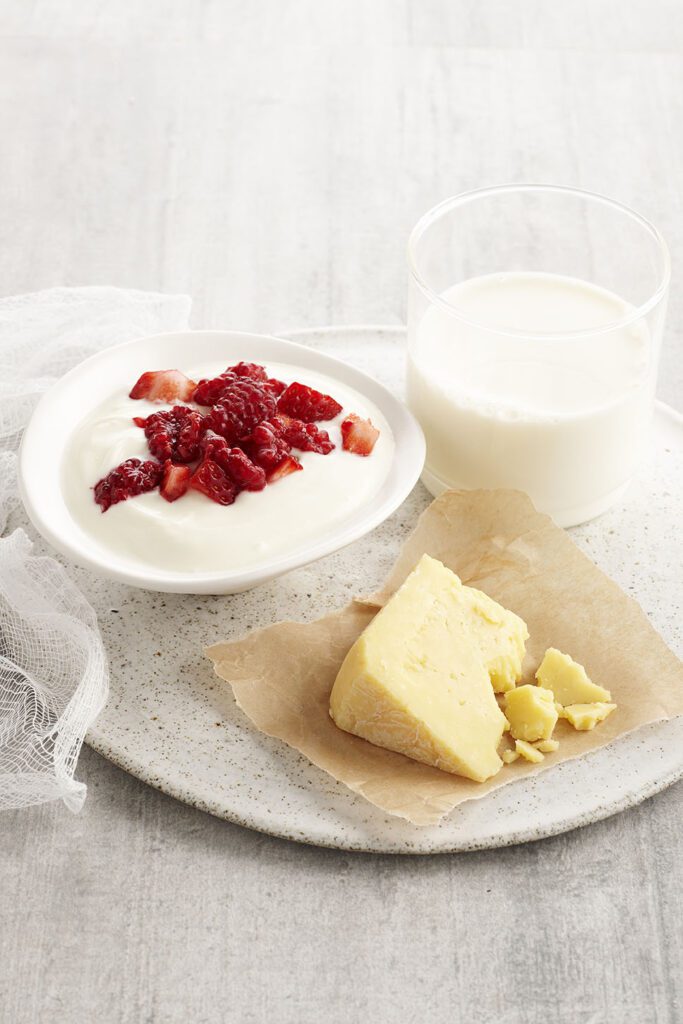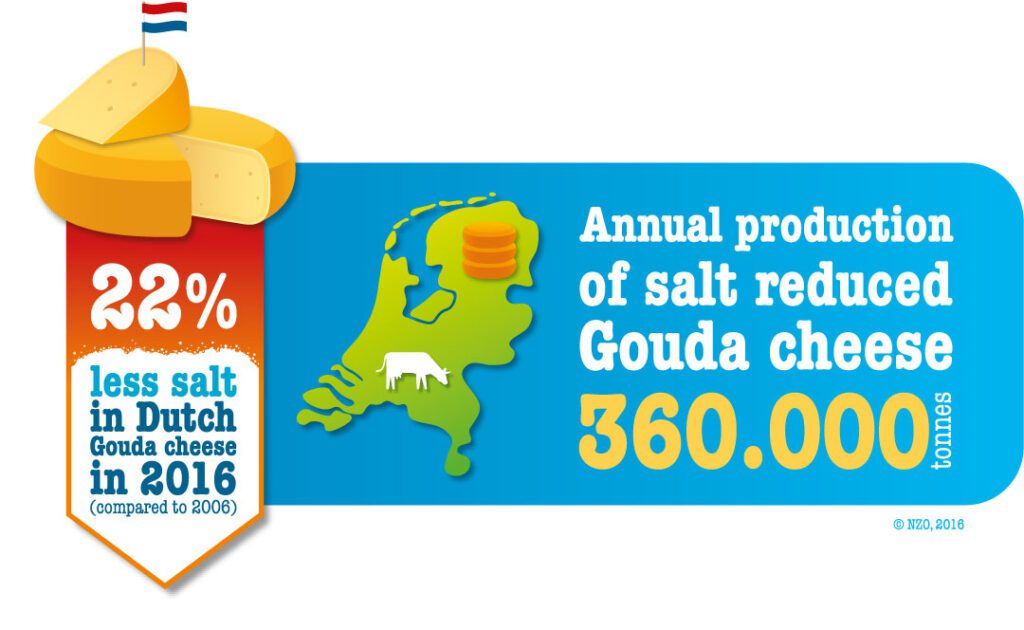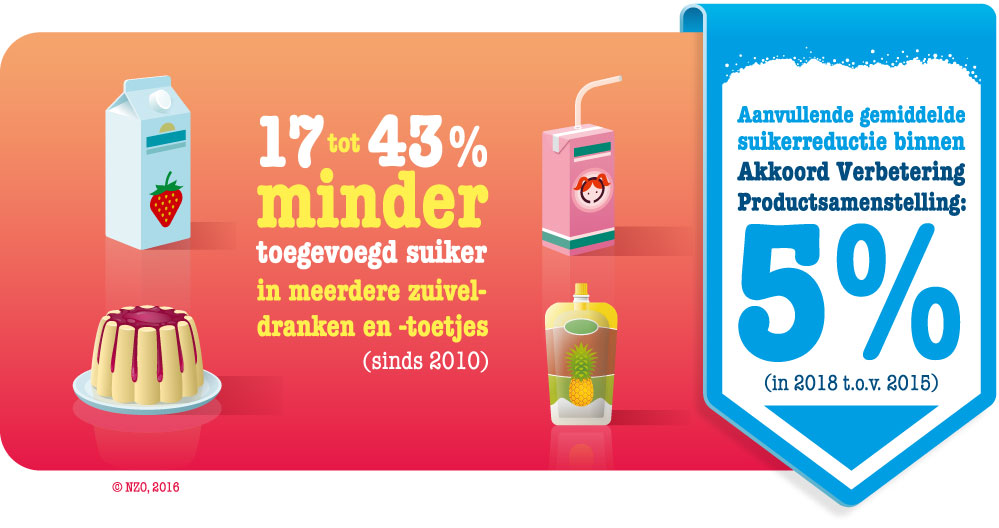Share this page
Initiatives to reduce salt in cheese and added sugar in sweetened dairy products in the Netherlands

Alignment with SDGs
AUTHOR
Tjitske Bolt, Jacco Gerritsen NZO - Dutch Dairy Association • The Netherlands
Working on reformulation for a healthier product
As a source of nutrients – like calcium, vitamins B2, B12 and A and protein – dairy plays a key role in a healthy diet. Because dairy covers many different kinds of products – from staple foods like milk, yoghurt and cheese to desserts and snacks – the dairy product group also makes a significant contribution to the average intake of added sugar, saturated fat and salt. The dairy sector has therefore actively been working on product reformulation since 2005.
Food manufacturers can help fight obesity by changing the way products are made. The Dutch dairy industry has been reducing the amount of salt in cheese, processed cheese and cheese spread and of added sugar in dairy beverages and desserts.
These efforts are part of the Dutch National Agreement to Improve Product Composition.
Our promise
The participating parties in the Dutch National Agreement to Improve Product Composition have drawn up ambitions to improve the product range in terms of salt, saturated fat and calories (sugar and fat) content. To achieve this, food producers have made chain agreements for various product categories.
Our journey
Members affiliated with the Dutch Dairy Association have made sector-wide agreements about how reformulation of products could be reached, step by step. Gradual reduction is necessary so that consumers can get used to the new taste perception and to keep them from switching to other products or from adding sugar.
The limit values of salt reduction in cheese have been reached. Further salt reduction in cheese would lead to unwanted consequences for food safety and quality. Salt plays an important role in the shelf life, stability and flavour of cheese. For naturally ripened cheeses like Gouda, food safety and quality have to be guaranteed at the end of the ripening period.
The amount of sugar in sweetened dairy products is also gradually reduced and were rarely substituted with artificial sweeteners. This allows consumers to continue to be able to choose between products with or without sweeteners.
Less salt, less sugar
Salt reduction in Gouda 48+ cheese
Between 2006 and 2016, the amount of salt in Gouda 48+ – the most popular cheese in the Netherlands – was reduced by an average of 22%. Independent audits are conducted at member cheese factories regularly to check whether their products comply with this standard.

Reduction of added sugar in dairy beverages and desserts (2015-2021)
In 2015, the Dutch Dairy Association committed to a sugar reduction between 2015 and 2018. Its goal was to reduce the amount of added sugar in dairy beverages and desserts by an average of 5%. Products targeted were desserts like puddings and mousses, vla (similar to custard) and flavoured dairy beverages. In 2018 the Dutch Dairy Association again committed to reducing the amount of added sugar by another 5% between 2018 and 2021.

Strong scientific research and evidence supports milk and dairy foods’ role in global nutrition and health. The dutch dairy sector has improved Gouda’s composition in terms of salt, saturated fat and calories content.
Tjitske Bolt Tweet
A valuable commitment
The amount of reformulated Gouda 48+ cheese totals 360,000 tons of cheese each year. The new standard for the amount of sodium in cheese is 687 milligrams of sodium per 100 grams of cheese, compared to the standard of 763 mg in 2011.
Furthermore, the Dutch dairy sector has shown to be a reliable partner for the government and NGOs by showing diligence and proactivity. As a result, the sector is also regularly used as an example of successful reformulation interventions. The Dutch Dairy Association plays a central role in this.
Future opportunities
The Dutch government is developing a new approach to product improvement. In 2020, a consultation was held on a new approach regarding criteria for a number of product groups. As a result of this consultation, proposals for criteria have been drawn up for several food groups among which cheese. These criteria have again been submitted to stakeholders. The Dutch Dairy Association has given feedback to both consultations on the classification of the food groups and the proposed limit values for salt in cheese, processed cheese and cheese spread.
References
Report “Product reformulation in Dutch dairy” (Only available in Dutch): https://www.nzo.nl/media/uploads/2019/01/Productherformulering-in-Nederlandse-zuivel-HR-180910.pdf
Report “Added sugar decline in Dutch dairy products Reformulating dairy products”: https://www.researchgate.net/publication/313888928_Added_sugar_decline_in_Dutch_dairy_products_Reformulating_dairy_products_REPORT
Report “Salt reduction in Dutch Gouda cheese: 22% reduction in 2006-2016”: https://www.researchgate.net/publication/305391633_Salt_reduction_in_Dutch_Gouda_cheese_22_reduction_in_2006-2016






